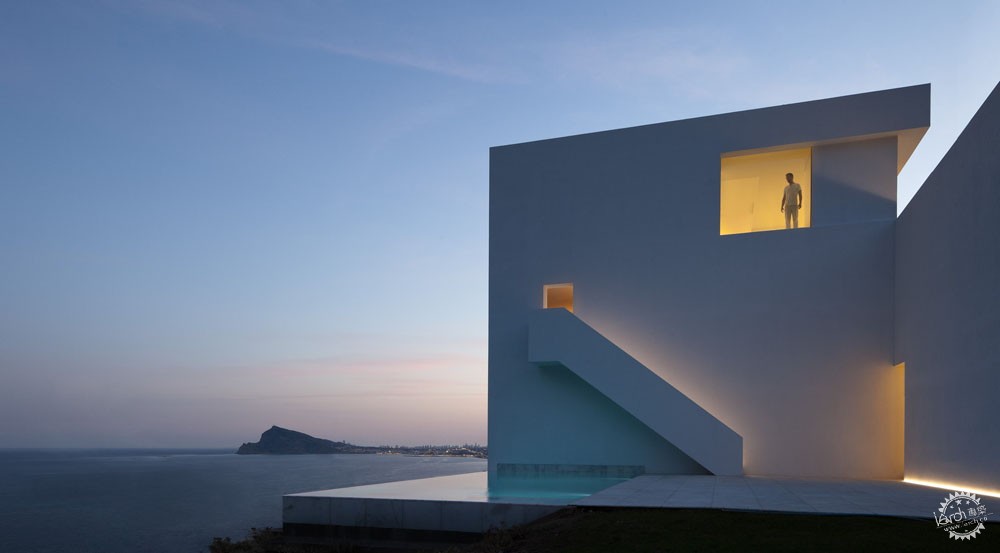
悬崖边的瞰海别墅|House on the Cliff / Fran Silvestre Arquitectos. Image © Diego Opazo
Fran Silvestre:未来十年,建筑将发生彻底的改变
"Architecture Will Change Completely in the Next Ten Years": Fran Silvestre of Fran Silvestre Arquitectos
由专筑网飞鱼,李韧编译
西班牙建筑师 Fran Silvestre以其细腻、纯净和简洁的现代作品而闻名。每一件作品都另人震撼,这种类型的建筑常常出现在邦德电影中,并成为有志向的居住者心中的胜地。
Silvestre开始他的建筑生涯是在阿尔瓦罗·西扎的工作室,他把这一经验做为其设计方法的基础。Silvestre认为,“那是一段难忘的时光,我在那里学到了许多建筑知识,我对他的作品风格印象深刻,对于我来说,他是一位天才。”Silvestre在2000年初离开西扎的工作室,并创立自己的事务所,并于2005年逐步成名。
从那之后 ,他继续开办工作室,但是也从事教学工作,并认为这对他自己也有教育意义。Silvestre最近与建筑师以及研究者 Can Ziyal 共同探讨了他的作品、对于当代建筑教育的担忧,以及对该领域未来希望。
Spanish architect Fran Silvestre is well known for his portfolio of nuanced, clean, and decidedly modern works. Each project is as stunning as the next, the type of home that shows up in Bond films and populates the Pinterest boards of aspiring homeowners.
Silvestre began his architectural career in earnest at the office of Alvaro Siza, an experience he cites as the foundation of his approach. "It was an incredible time, I learned all about architecture there," explains Silvestre. "I was impressed by his style of work....for me, he is a genius." Silvestre left Siza's office in the early 2000s to open his own practice, which itself took off in 2005.
Since then, he's continued to practice but has also built a career in teaching that he considers educational for him as well. Silvestre recently sat down with architect and researcher Can Ziyal to discuss his work, concerns about contemporary architectural education, and hopes for the future of the field. Their discussion, here:
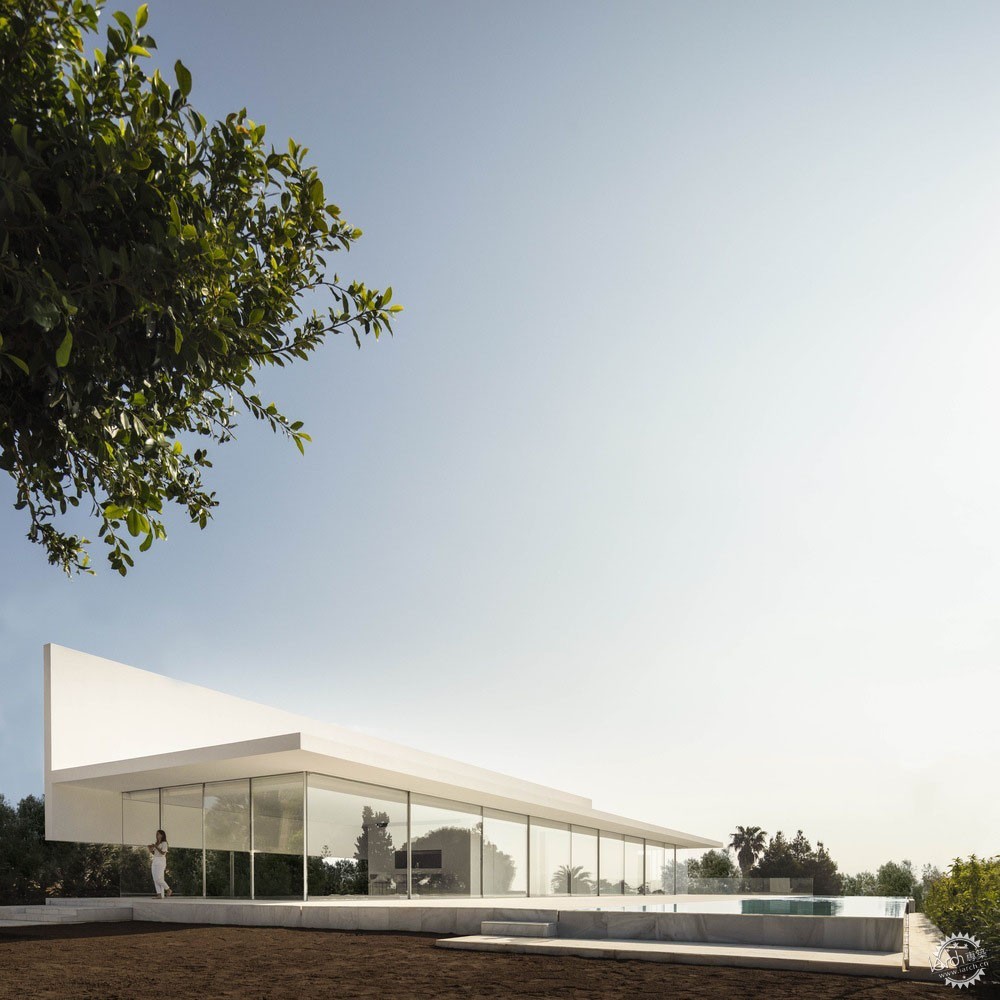
西班牙Hofmann住宅|Hofmann House / Fran Silvestre Arquitectos. Image © Fernando Guerra | FG+SG
Can Ziyal(下文称为CZ):给我们的读者介绍下自己吧?
Fran Silvestre(下文称为FS):我们不是大型建筑公司,我们想通过工作将美具体化。我们想要去满足业主,以及所有参与项目的人 ,包括我们的合作伙伴。现在,我们事务所有27名员工。
CZ:是什么让你成为建筑师呢?
FS: 我们家族有工程师传统,已经超过5代了。我的曾曾祖父设计了世界上第一辆汽车。他是一位发明家,但是他从来没有上过大学。并且他设计了一种蒸汽运转而无轨道的机器。在他之后的几代长辈都成为了工程师。我在有着大量丰富的工程书籍的图书馆旁边长大。我意识到我喜欢设计的艺术性,并决定成为一名建筑师。
当然,地中海同样对我产生了很深的影响。我在这里生活了很多年,我意识到我错过了很多西班牙蓝色的天空以及经典的光。
CZ:建筑对你来说是什么?
FS:建筑不仅仅是房子。我们为在我们的设计中生活和工作的人们建立了身份,这一设计能够使愿望变成现实。有时,设计能够改变一个人的生活。
Can Ziyal: Would you like to introduce yourself to our readers?
Fran Silvestre: We are not a very big architecture firm. We want to materialize the beauty with our work. We like to satisfy the owner of the project and everybody who takes part in the procedure - including our collaborators. Right now, there are 27 people working in our office.
CZ: What made you become an architect?
FS: Our family has a big tradition of engineers with more than 5 generations. My great-great grandfather designed the first car in the world. He was an inventor who never went to university and he designed a machine running with vapor that moves without rails. After him all the generations became engineers. I grew up next to a library with a great selection of engineering books. I realized that I liked the artistic side of design and decided to become an architect.
Of course, the Mediterranean also has a great influence on me. When I lived several years outside of here, I realized how much I missed the Spanish blue sky and the typical light.
CZ: What is architecture to you?
FS: Architecture is more than buildings. We build an identity for the people who live and work in our designs where people’s desires become the reality. Sometimes you can change the life of a person just by a design.

Office Building 1905 / Fran Silvestre Arquitectos. Image © Diego Opazo
CZ:当你思考全世界的建筑的时候,第一个想到的是哪座建筑或者建筑师呢?
FS:我不知道为什么我想起的是非常古老的建筑,例如巴洛克、波罗米尼、阿罕布拉宫。我认为,阿罕布拉宫是世界上最漂亮的建筑。同时,我也会想到西班牙北部的古罗马教堂:纳兰科圣玛丽教堂(Santa Maria del Naranco)。它是一座美丽的小教堂。
对我印象最深刻的是阿罕布拉宫。实际上,它不是一座建筑,而是一系列的花园,而且你不能准确地描述阿罕布拉宫的形状。最令我印象深刻的建筑师可能是阿尔瓦·阿尔托。
CZ:在你提到的项目里有没有你想做的、与众不同且印象深刻的项目?
FS:有很多标志性的项目,我喜欢用不同的处理方式。标志性建筑的必要性是一个问题,过去10年,我们一直在讨论古根海姆博物馆以及世界上此类建筑的影响力。
CZ:你有自己独特的风格,并有明显的识别度,看到图片就知道这一项目是出自您之手。哪些项目令你比较自豪呢?你认为是否每位建筑师都应该有自己的设计风格?在设计这些作品之前 ,你怎么思考呢?
FS:不,人们能说出这是建筑师 Fran Silvestre设计的项目,这是一件好事,但是这并不是我们追求的目标。可能是一种设计方法,它是一种最终解决问题的方法。当你看我们所做的项目时,你会发现其中有着许多相同的处理方法。对于这一方面,我用书法和文字做比较。你学会一种书法,就会使你的信件与众不同。但是对于我们来说,书法并不是重要,文字的意义比较重要。
CZ: When you think about the word architecture, is there a building or architect comes to your mind instantly?
FS: I do not know why but it reminds me of very old architecture such as Baroque, Borromini, Alhambra. For me, Alhambra is one of the most beautiful buildings in the world. Also, it reminds me of the Roman church in the north of Spain, Santa Maria del Naranco. It is an incredible and beautiful small church.
[The most] iconic building for me is the Alhambra. In fact, it is not a building, it is a sequence of gardens and you cannot tell the exact shape of the Alhambra. The iconic architect for me might be Alvar Aalto.
CZ: Is there an iconic project that you say you would have done it differently?
FS: There are many iconic projects that I prefer to do it in a different way. The necessity of iconic buildings is a problem. In the last 10 years, we have been talking about the Guggenheim effect and there is too much of it in the world.
CZ: You have a distinct style and it is easy to tell that a project is designed by you after seeing a picture. Is that something you are proud of? Do you think every architect should have a distinct style? Is that something you had in mind before designing them?
FS: No. It is good that people can tell it is a Fran Silvestre Arquitectos project, but it is not something we look for. Maybe it is a question of method. It is a method that resolves at the end. When you look at our projects, you can see that the same method is used. For this, I use a comparison between calligraphy and text. You can have calligraphy and you can make a distinction of a letter. However, for us, calligraphy is not important. The meaning of the text is.
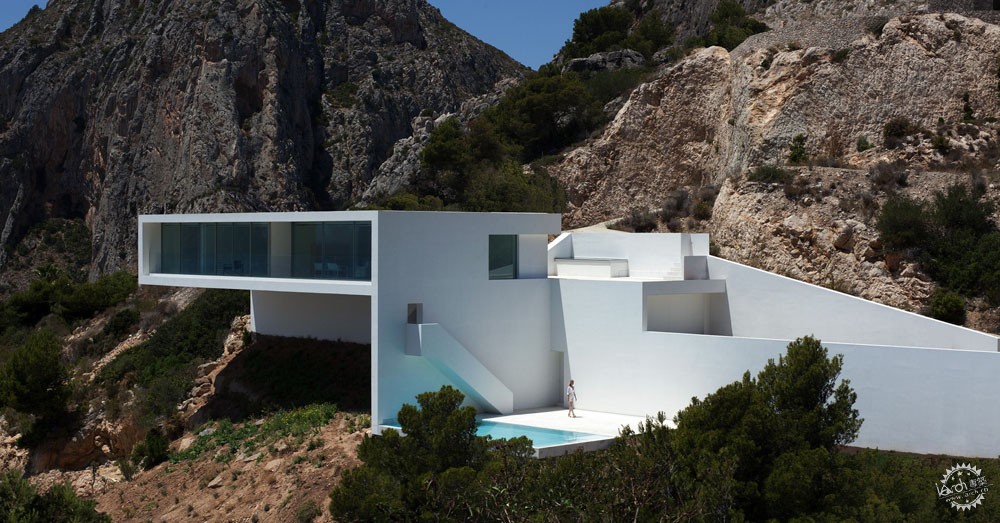
悬崖边的瞰海别墅|House on the Cliff / Fran Silvestre Arquitectos. Image © Diego Opazo
CZ:你的哪个项目对你的职业生涯影响最大?
FS:每个项目都影响了我职业生涯,但是悬崖之屋(Casa Acantilada)对我的影响最大。它在媒体上非常受欢迎,并且给我们带来了很大的关注度。人们认为如果你能做到这一小型经济房,那么对于其他项目就是小菜一碟。
CZ:我们知道你目前在大学里讲课,你从事这一职业多久了?有没有对你的建筑生涯有影响?
FS:自从2015年开始教课,在我刚刚建立事务所的同时就开始讲课。当在讲课时,思路是开放的,我不像阿尔瓦罗·西扎一样是一个天才,所以我需要一个非常优秀的团队。我们事务所的工作只有我们一起才能完成。我本不希望我的名字出现在我们事务所的头衔中,重点在于突出团队的重要性,但事情就是这样发生了。随着教学,我可以从我的学生中选择一些优秀者加入我们的团队。
CZ:你设计了一系列名为“March”的项目,你愿意谈谈它们吗?
FS:我在西班牙瓦伦西亚理工大学任职,几年后,我对于指导学生们未来从事的职业方向感到有些挫败,因为他们并不确定以后要做什么。他们都是十分优秀的学生,但是他们认为他们需要对于未来获得更多的指导。这可能只发生在一部分学生身上,但是如果所有的学生都有相同的需求,那么这就是一个问题。我问自己如何找到自己的道路,我曾经观察阿尔瓦罗·西扎和莫拉的工作方式。
在五年的教学中,我们提升和探索他们的个人天赋,但是最后发现,它并没有那么起作用。我们没有教如何像一个团队一样工作。当今世界千变万化,一个人不可能拥有所有知识。
CZ: Which project of yours has most shaped your career?
FS: I think all of the projects in the beginning changed my career but Cliffside House (Casa Acantilada) had the biggest impact. It was very popular in the media and brought the attention on us. People thought if they could do this with a small budget house, they can easily do other projects.
CZ: We know that you have been teaching in the universities, how long have you been doing so? And how does it affect your professional career?
FS: I have been teaching since 2005. I started to teach at the same time that I established my office. When you teach your mind is always open. I am not a genius like Alvaro Siza so I need a great team to work with. The work of our office is only possible with the people in our team. I would have preferred to not to have my name in our office title to put more emphasis on their part but it happened that way. With the help of teaching, I have a great option to choose the team I need from my students.
CZ: You have started a series of programs called March. Would you like to talk about them?
FS: I teach at the Polytechnic University of Valencia and after several years I felt a frustration among students about what to do with their careers because they are not sure what to do. They are very good students but they feel like they need more guidance towards their futures. This could happen to a couple of students but if all of the students feel the same way then there is a problem. I asked myself how I find my way. I looked at how Alvaro Siza and Souta de Moura work.
During the five year education we promote and explore the individual talent but in the end, it does not work like that. We do not teach how to work as a team. The world has changed a lot, one person cannot have all the knowledge to do something special.
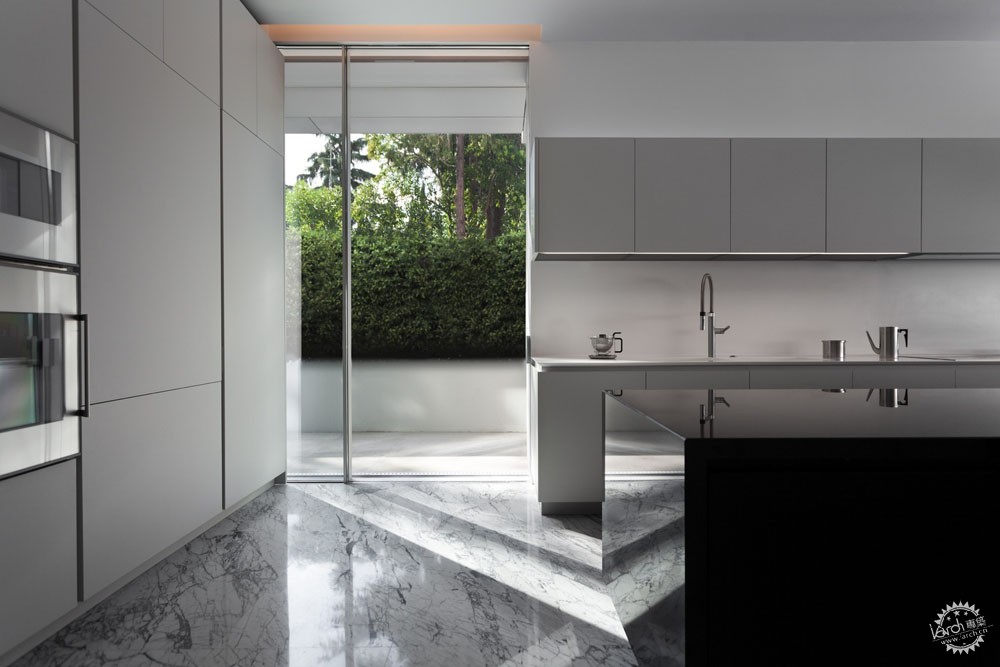
© Diego Opazo
CZ:因为你是一名教授和建筑师,你那个时代的建筑学学生和现在的建筑学学生有哪些区别?
FS:事实上,相比于过去,现在的学生有很多的资料。但这并不适用于所有情况。以前资料不多,但是有很高的质量。现是你有很多的信息,但是你并不知道哪些是好的哪些是不好的。结果是,好学生更好,但普通学生比过去要差一些。
CZ:在做设计时,你优先考虑哪些元素?形式还是功能?
FS:对我们的事务所来说,二者同样重要。并不是一个哪个优先另一个。彼得·卒姆托有一本书非常有意思,里面谈到了两者之间的相互作用。的确,我们首先着手于形式。然而,当我们考虑功能时,形式随之改变。对于我们来说,从形式开始着手考虑比较简单。
在西班牙大学里的设计有些偏于理论,这比较有趣。你不能说你是从形式开始着手考虑,你必须说你开始于某一个想法。这是目前一个趋势。
CZ:少就是多还是多就是多?
FS:看情况而定,当然,多即是多。项目中最重要的一部分就是知道哪里要停止。如果你正在画一幅画,你必须问自己哪些要在哪里停止。在某地点上,如果你处理的太复杂,这一项目就会很糟。而这一点,就是少就是多。
CZ:你怎样决定这一点呢?
FS:最后,你会发现,增加的并不是必要的,并且可能不会使项目变好。我们运用两个词,简化论与整体论。对于多样性的整体非常重要。
CZ: Since you are a professor and an architect, what is the difference between the architecture students back in your day and now?
FS: In fact, they have more information now compared to the past. But this not good in every case. There was less information but it had more quality. Now you have a lot of information and you do not know if it is good or bad. What happens is that the good students are better students but the average students are worse compared to past.
CZ: Which comes to first for you? Form or function?
FS: For [our office] they are equal. One is not more important than the other. There is a very interesting book by Peter Zumthor, that talks about the interaction between them. It is true that we start with the shape, the form. However, after we put the function we change the shape again. It is easier for us to start with the form.
It is interesting that the universities in Spain are somewhat academic and you cannot say that you start with the form. You have to say that you start with nothing, with an idea. This is more in trend now.
CZ: Less is more or more is more?
FS: It depends. Of course, more is more. The most important part of a project is to know where to stop. If you are doing a painting, you have to ask yourself where to stop. After a point, if you put more things, the project becomes worse. At that point, less is more.
CZ: How do you decide?
FS: At the end, you feel that it is not necessary to add more and it will not make the project better. There are two words we use, reductionism and holism. It’s important to have a heterogeneous totality.
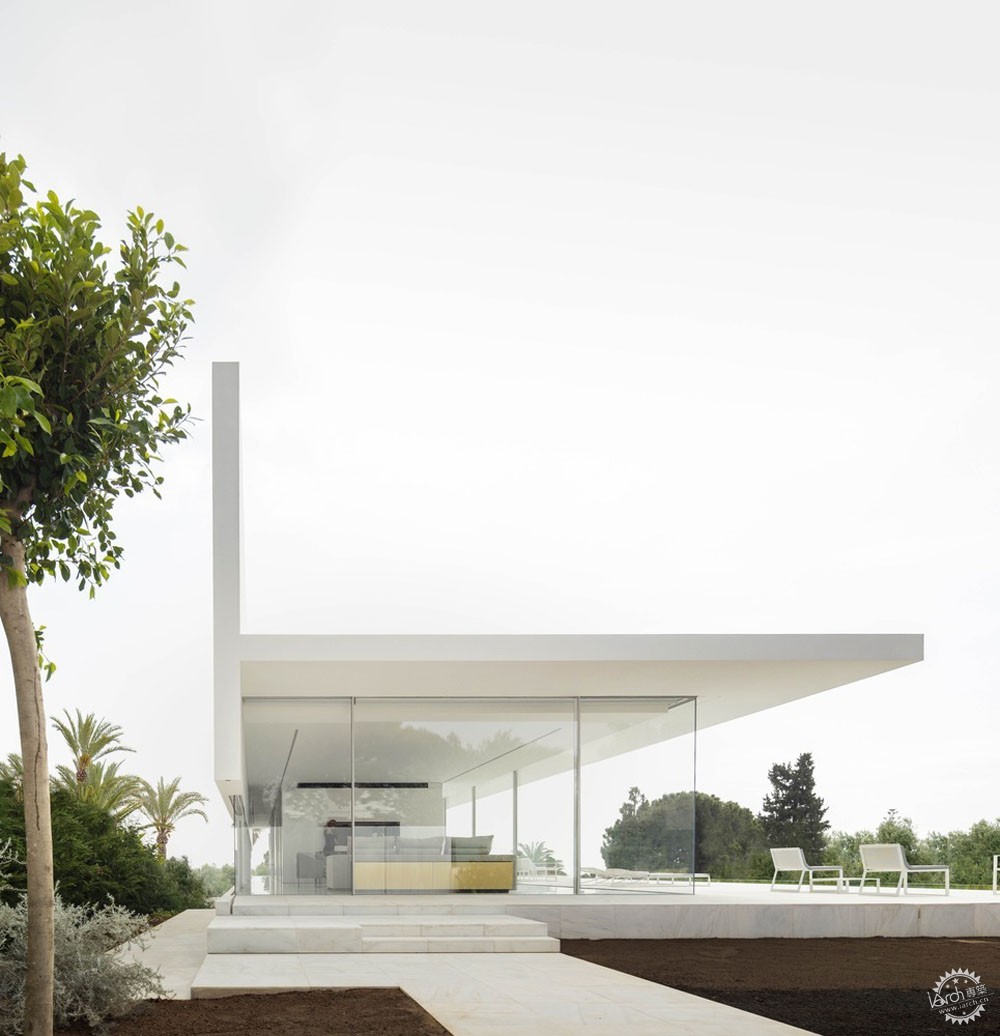
西班牙Hofmann住宅|Hofmann House / Fran Silvestre Arquitectos. Image © Fernando Guerra | FG+SG
CZ:白色对于你们的项目具有重要的意义。你是否认为无色的建筑可以很好地表达你的想法呢?
FS:我们使用白色有三个原因。第一,蓝色和白色之间有强烈的对比,这是文化的象征。第二,其自身的科学性,当你在室内运用白色,它可以让室内看起来有更大的空间。第三个原因是热能的问题。你不能把大型黑色盒子放在太阳底下。最后,主观原因是对于美的感知。
CZ:如果让你用一个词来形容你的风格?我第一个想到的就是简洁。
FS:是的,可以说是简洁,相对于前一个词,“干净”一词对我来说比较重要。想象一下,我们只谈论室内建筑。简洁的白色内部空间比较好。Beatriz Colomina有一篇非常好的文章,分析建筑与肺结核之间的关系。因为许多现代建筑师都患有肺结核,并且他们发现为了使房间有更多的阳光,就需要更大的窗户。同时,白色也意味着心灵上的纯静。当你行走在白色的空间时,你的视线的转动,你会感到非常舒适。
CZ:你的项目白天和夜晚看起来不同。这是你一直在追求的目标吗?
FS:是的,因为在一天当中,太阳光照的不同,会完全改变这一白色空间,并且在夜晚我们使用暖色的光源,3000K的灯光,更接近火的效果。在办公空间中,我们更喜欢白色的光,而在住宅里,我们更喜欢暖色的光。
CZ: The color white is very significant in your projects. Do you think colorless architecture is a better way of expressing yourself?
FS: We use white for three reasons. There is a strong contrast between blue and white. It is a symbol of culture. The second reason is scientific. When you have a white interior it makes it look more spacious. There is also the thermic question. You cannot have a big black box under the Spanish sun. And lastly, it is the subjective reasons about the perception of the beauty.
CZ: If you have to use one word to express your style what would it be? The word comes to my mind is clean.
FS: Yes, maybe clean. The word clean is important to me in relation to the previous question. Imagine we are only talking in terms of interior architecture. The possibility of cleaning a white interior is greater. There is a very good article of Beatriz Colomina, making a relation between architecture and tuberculosis. Because all of the modern architects grew in relation to tuberculosis and they discovered the need for bigger windows to have more light in their houses.
Also, white means clean in mind. When you walk into a white interior, your vision flows, you feel more comfortable.
CZ: Your projects look very different compared to day and night. Is that something you have been pursuing specifically?
FS: Yes, because during the day you have this white space that changes completely with the colors of the sun and at night we use warmer light, 3000K lights which is closer to the fire effect. In offices, we prefer whiter lights and in the houses, we prefer warmer lights.
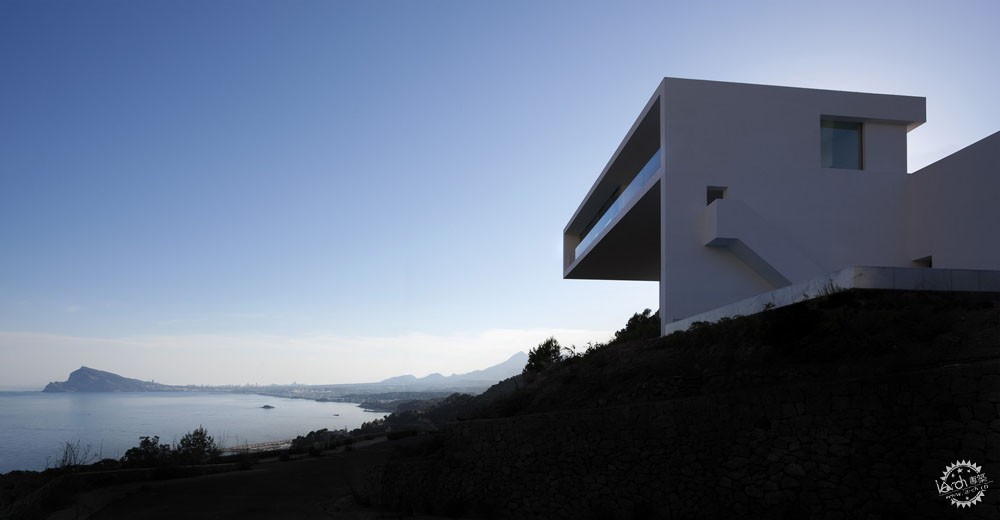
悬崖边的瞰海别墅|House on the Cliff / Fran Silvestre Arquitectos. Image © Diego Opazo
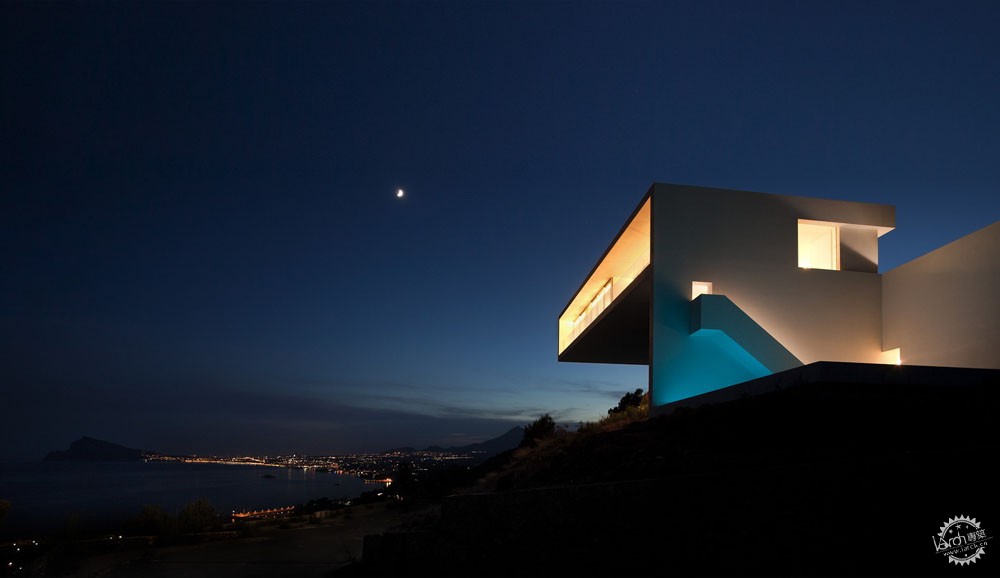
悬崖边的瞰海别墅|House on the Cliff / Fran Silvestre Arquitectos. Image © Diego Opazo
CZ:什么是你生活中最大的动力?什么样的原因促使你在早晨起床去工作呢?
FS:对我来说,是好奇心。成长的可能性以及去看看下一步我们能做哪些。对我来说,最大的动力就是项目中的项目,我知道我们现在可以做好的建筑,并且我们也知道怎样去做。然而,对我来说,团队中的项目使我更满意,就像足球队,我就像是领队,并且将来我会成为团队的主席。观察好团队的工作方式非常重要。
CZ:你有哪些建议给那些年青的建筑师以及建筑系学生呢?
FS:做自己很重要,因为别人都在这样做。用你自己的方式做事很重要。当然,你有一定的影响力,但是如果你没有发现自己的定位,在以后的时间里就不能一直做自己。
CZ:对于建筑的未来你有什么看法?
FS:我对于建筑的未来是非常乐观的。建筑师在接下来的10-20年将会完全改变,建筑的概念也将会完全改变。我们今天做的,在将来看起来就是过时。景观、环境和技术之间的联系将会改变我们的看法,即我们不是公民,我们是Argonauts,并且我们要对我们所处的位置保持乐观的态度。
CZ: What is your biggest motivation in life? What is the reason main reason for you to leave your bed and go to work in the mornings?
FS: For me, it is the curiosity. The possibility to grow and to see what will be the next thing we can do. One of the biggest motivations for me is the project of a project. I know that we can do good buildings now and we know how to do them. However, for me, the project of the team gives me more satisfaction. Just like a football team, I am like the manager now and I will be the team president in the future. To look at how a good team works is precious.
CZ: What advice would you give to young architects and architecture students?
FS: It is important to be yourself because everyone else is taken. It is important to do things in your own way. Of course, you have influence, but if you don’t find your position, at the end you cannot maintain yourself during the years.
CZ: What do you think about the future of architecture?
FS: I am very optimistic about that. Architecture will change completely in the next 10-20 years. The conception of what architecture is will completely change. What we do nowadays will be old-fashioned in the future. The relationship between the landscape, environment and the technology will change our vision that we are not citizens and we are Argonauts and we will need to optimize where we are.
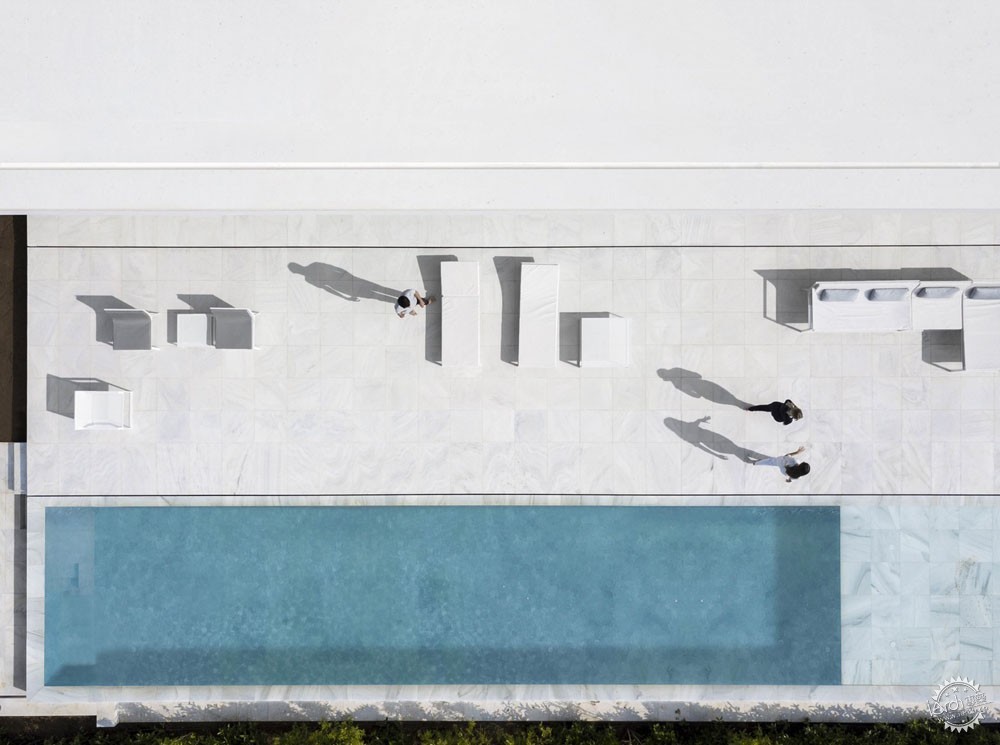
西班牙Hofmann住宅|Hofmann House / Fran Silvestre Arquitectos. Image © Fernando Guerra | FG+SG
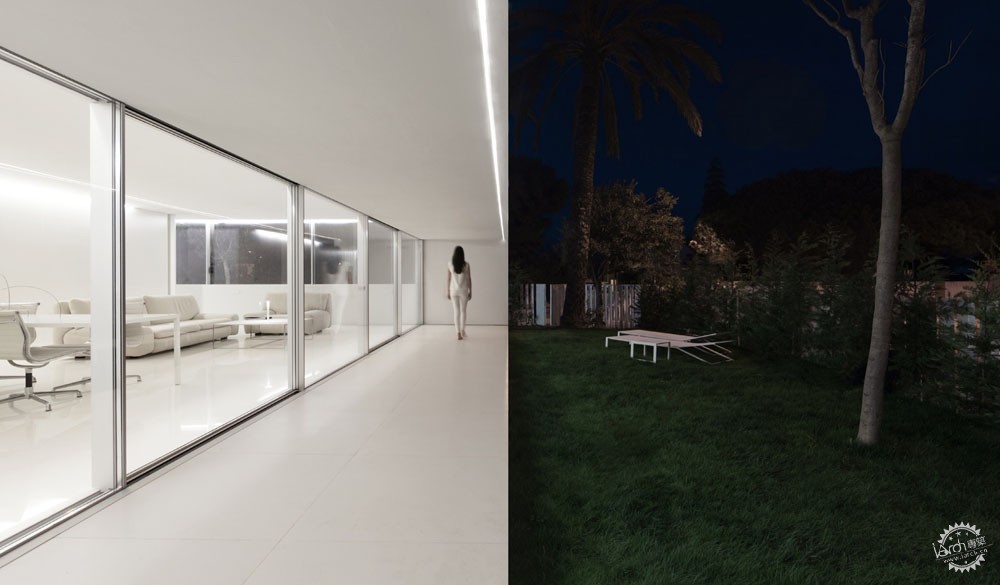
西班牙“微风之家”|Breeze House / Fran Silvestre Arquitectos. Image © Diego Opazo
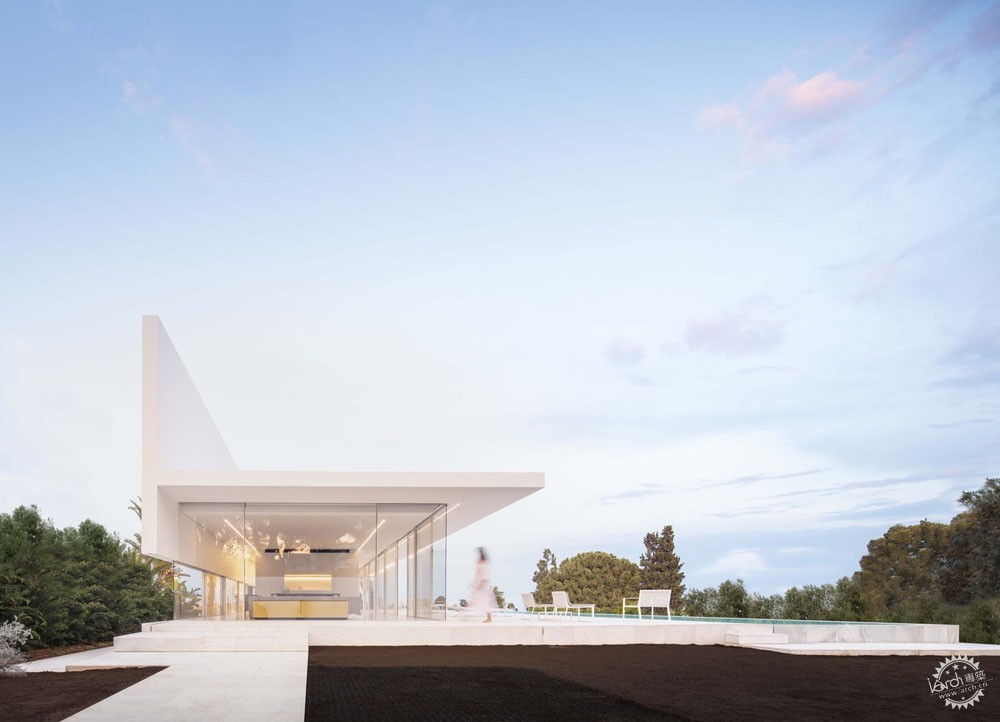
西班牙Hofmann住宅|Hofmann House / Fran Silvestre Arquitectos. Image © Fernando Guerra | FG+SG

悬崖边的瞰海别墅|House on the Cliff / Fran Silvestre Arquitectos. Image © Diego Opazo
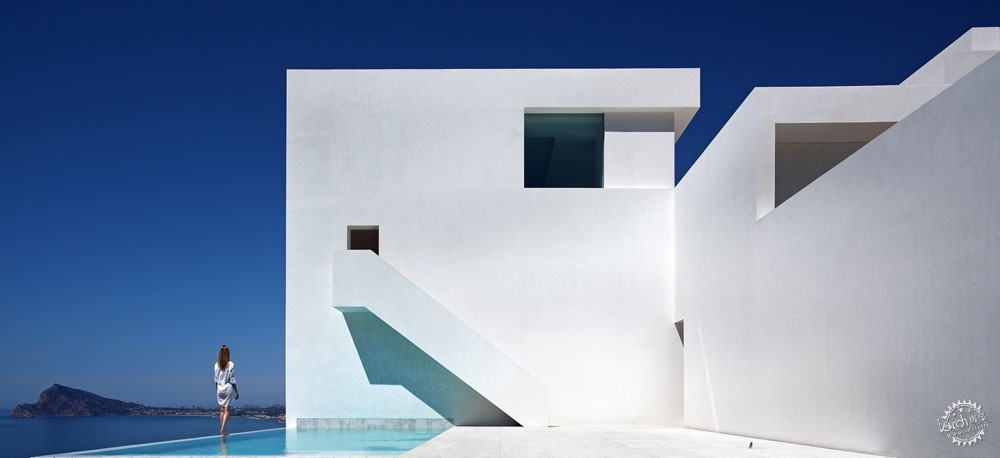
© Diego Opazo
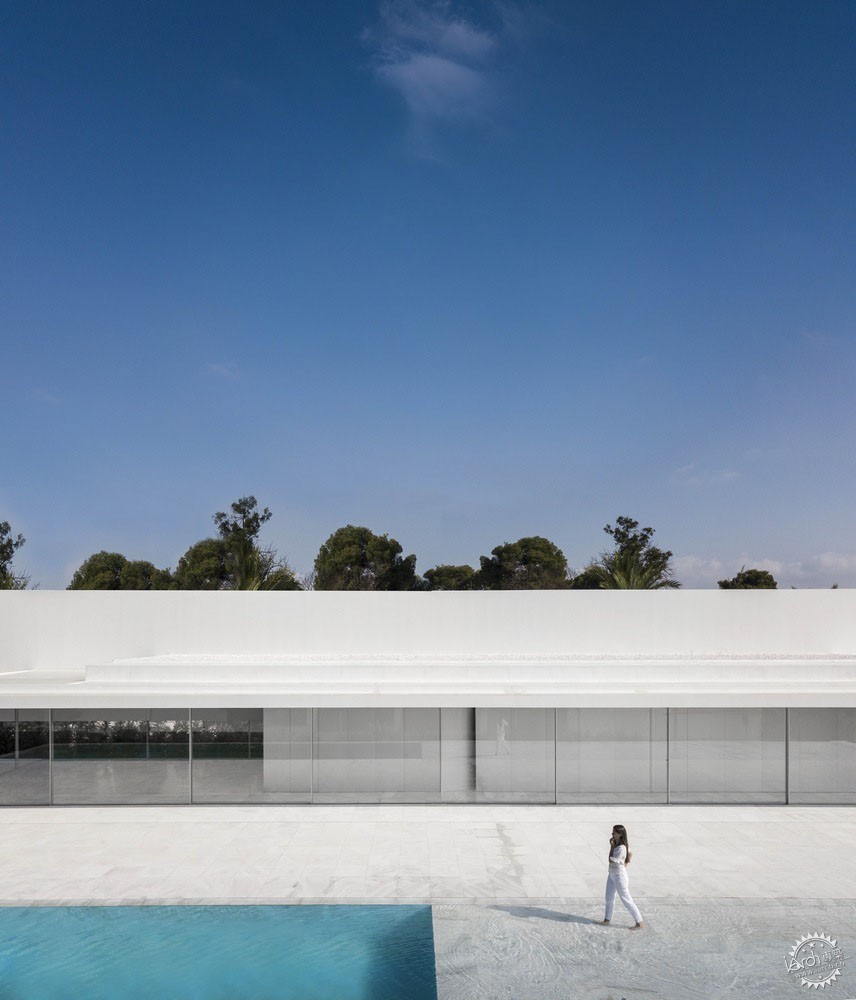
西班牙Hofmann住宅|Hofmann House / Fran Silvestre Arquitectos. Image © Fernando Guerra | FG+SG
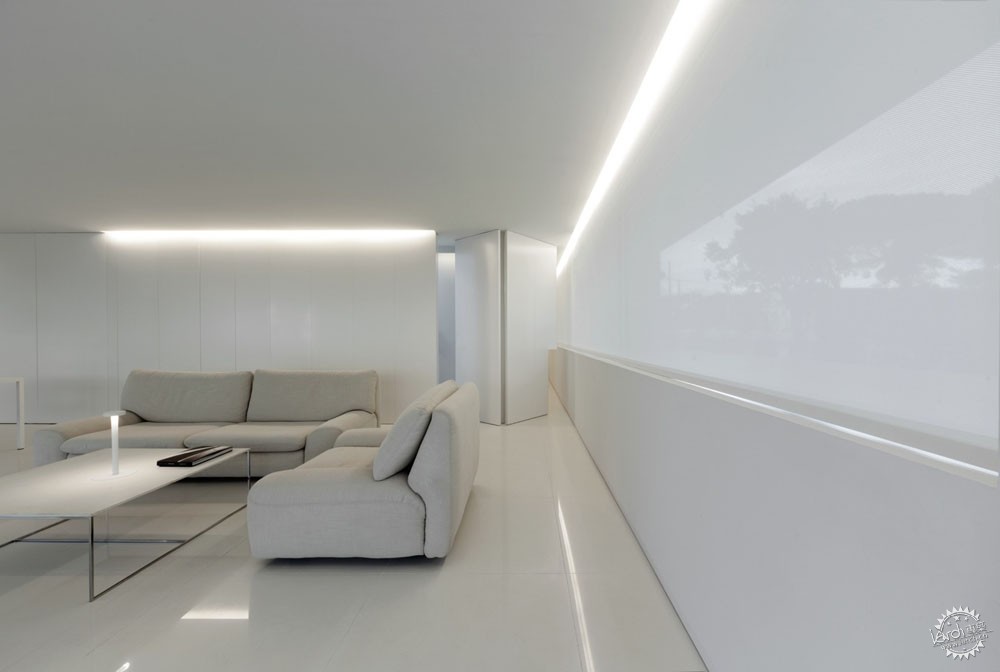
© Diego Opazo
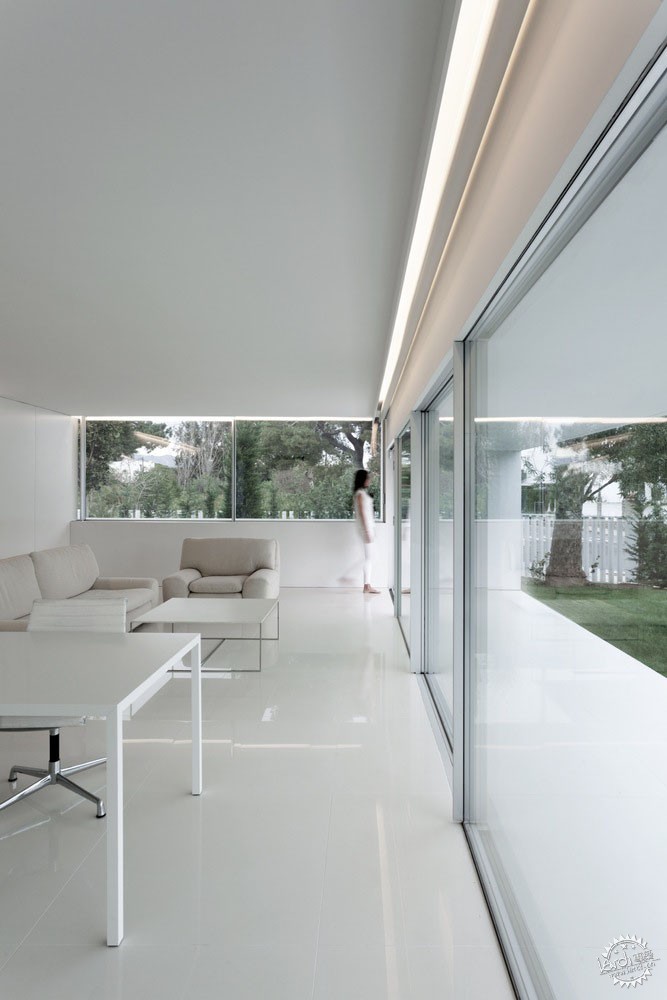
© Diego Opazo

西班牙Hofmann住宅|Hofmann House / Fran Silvestre Arquitectos. Image © Fernando Guerra | FG+SG
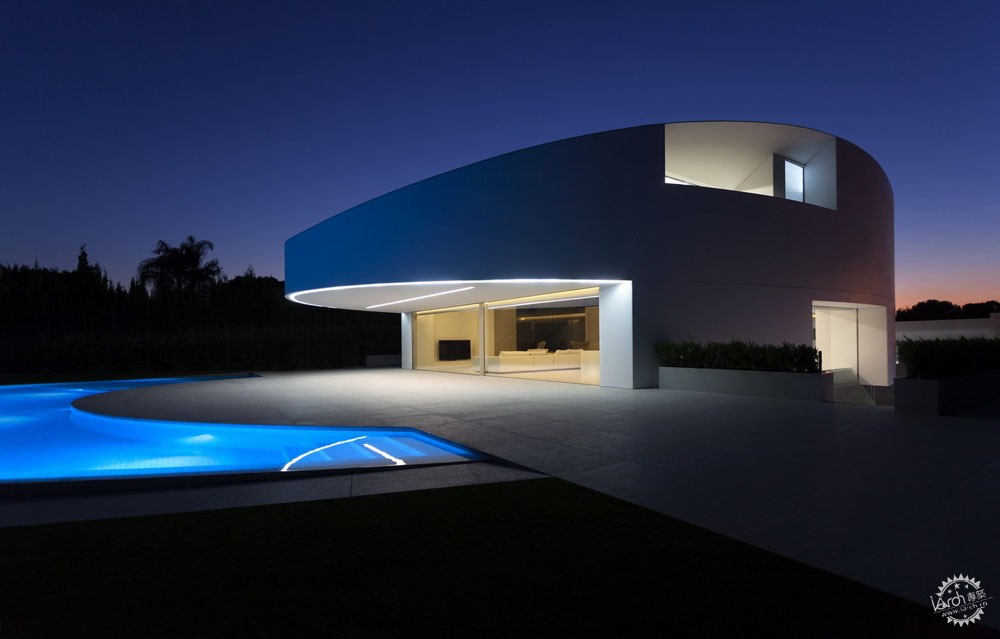
巴林特住宅|Balint House / Fran Silvestre Arquitectos. Image © Diego Opazo
|
|
